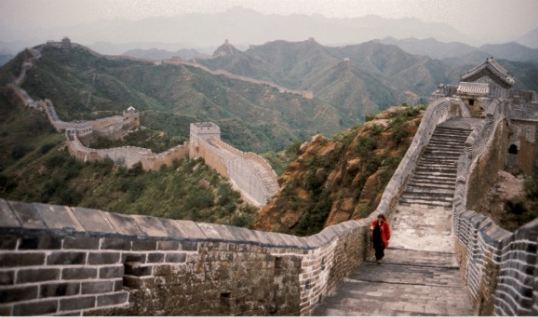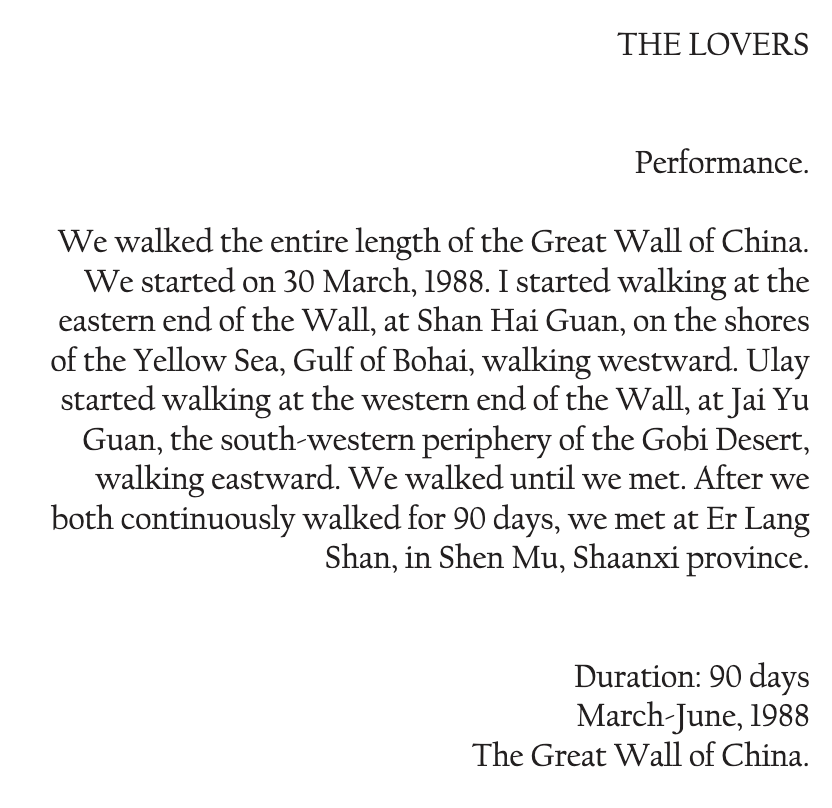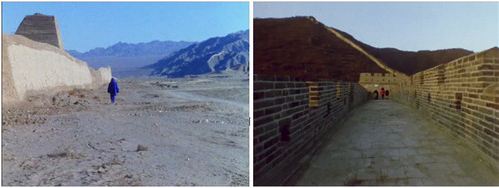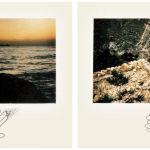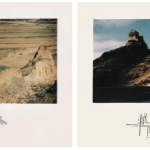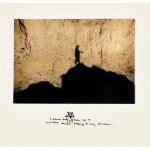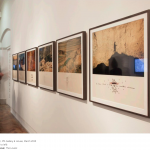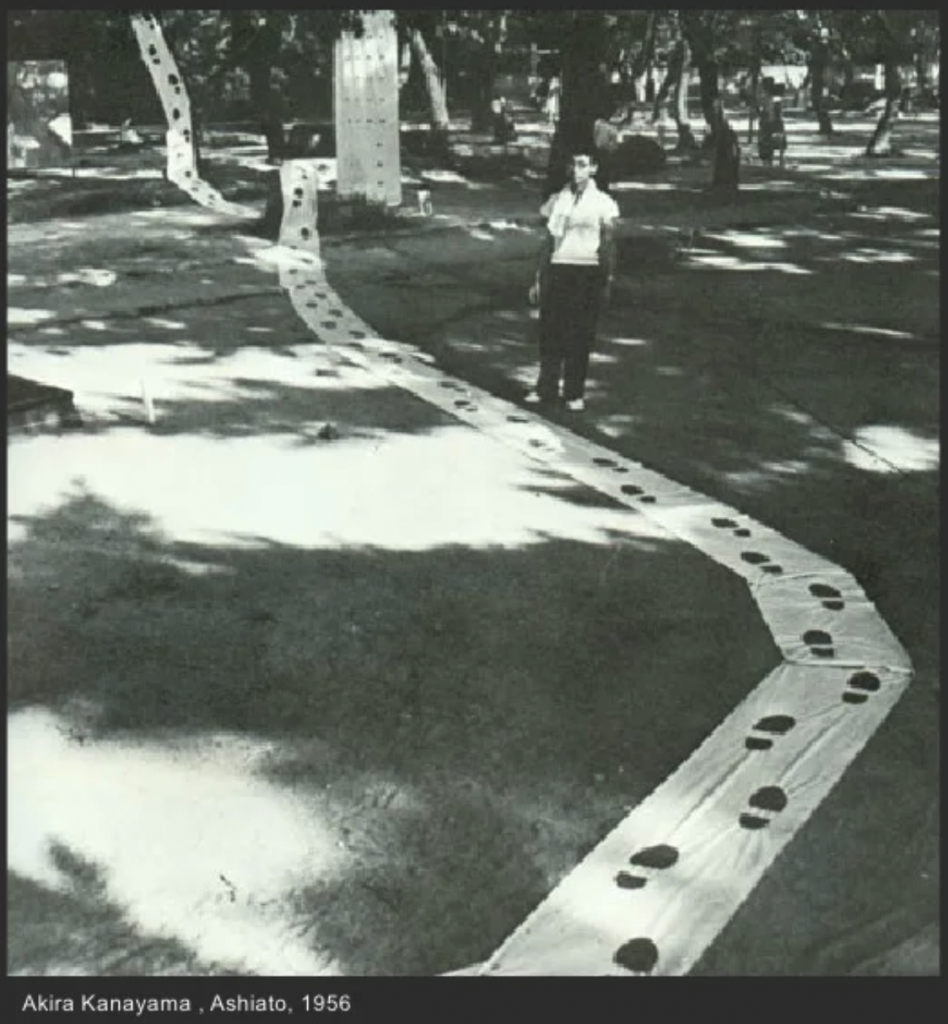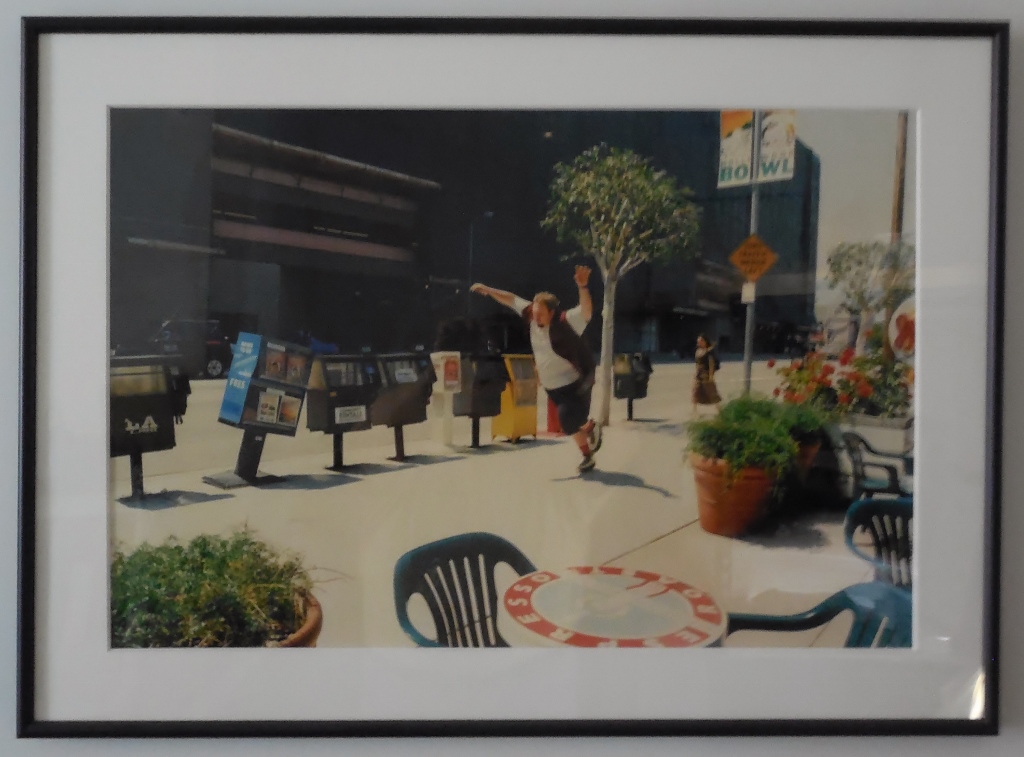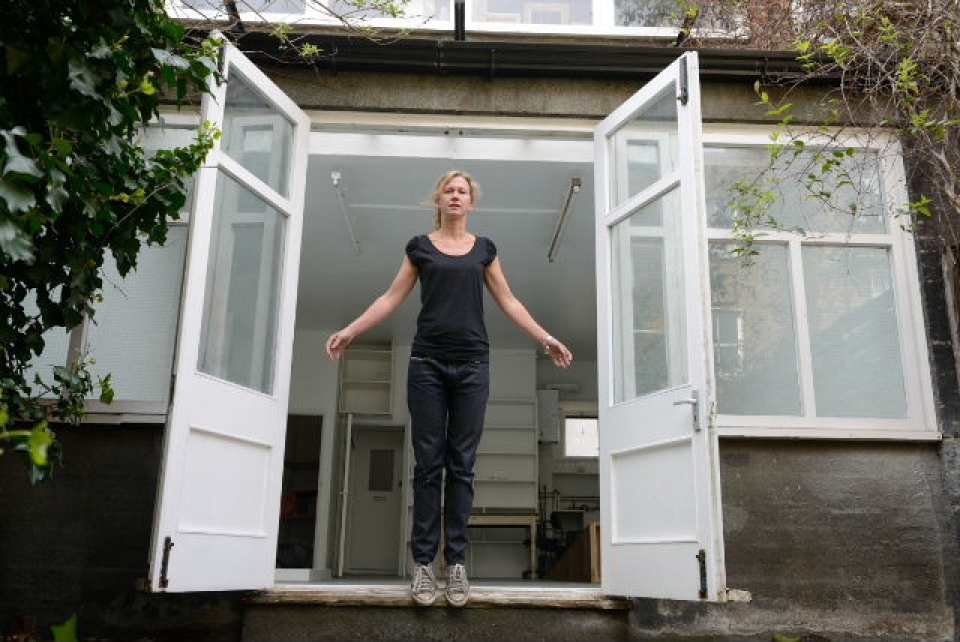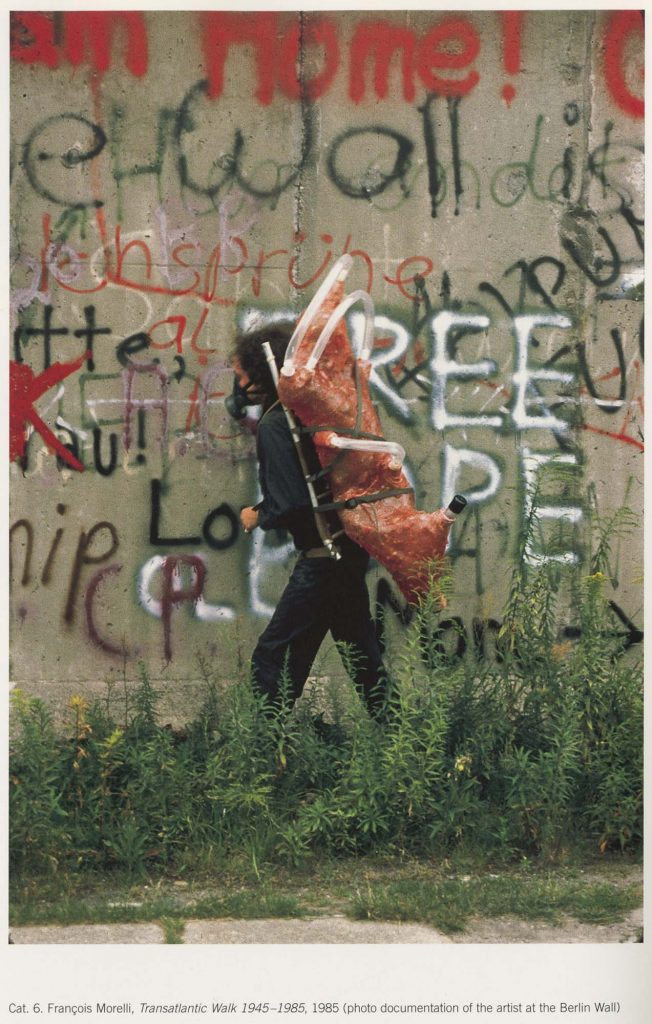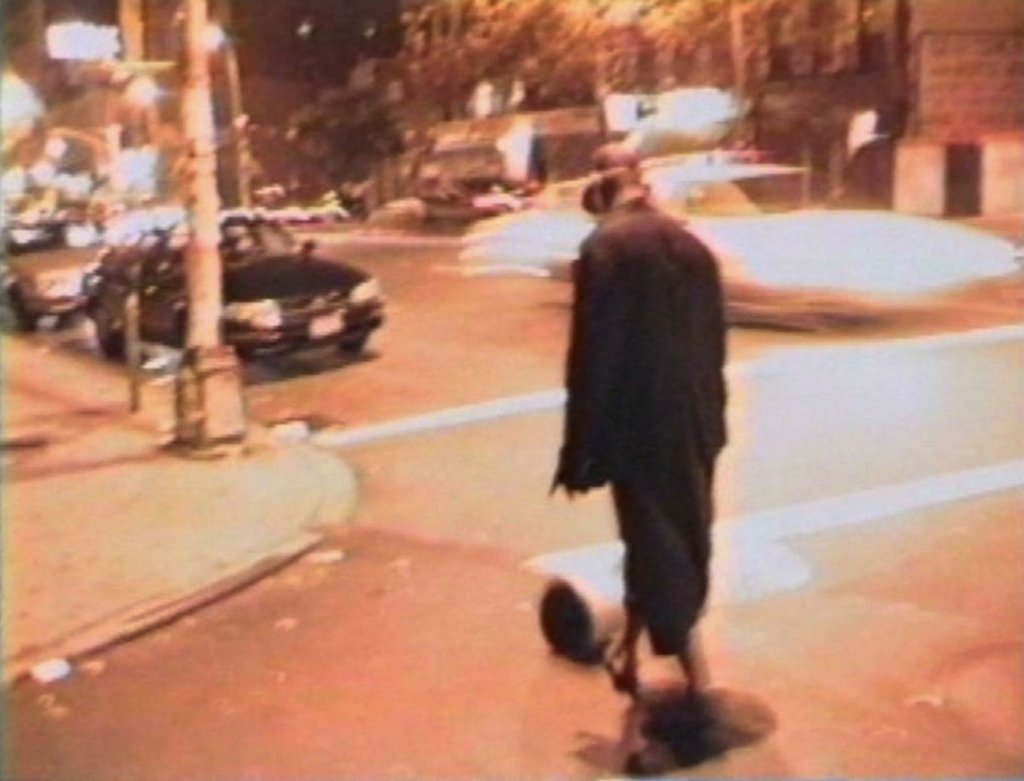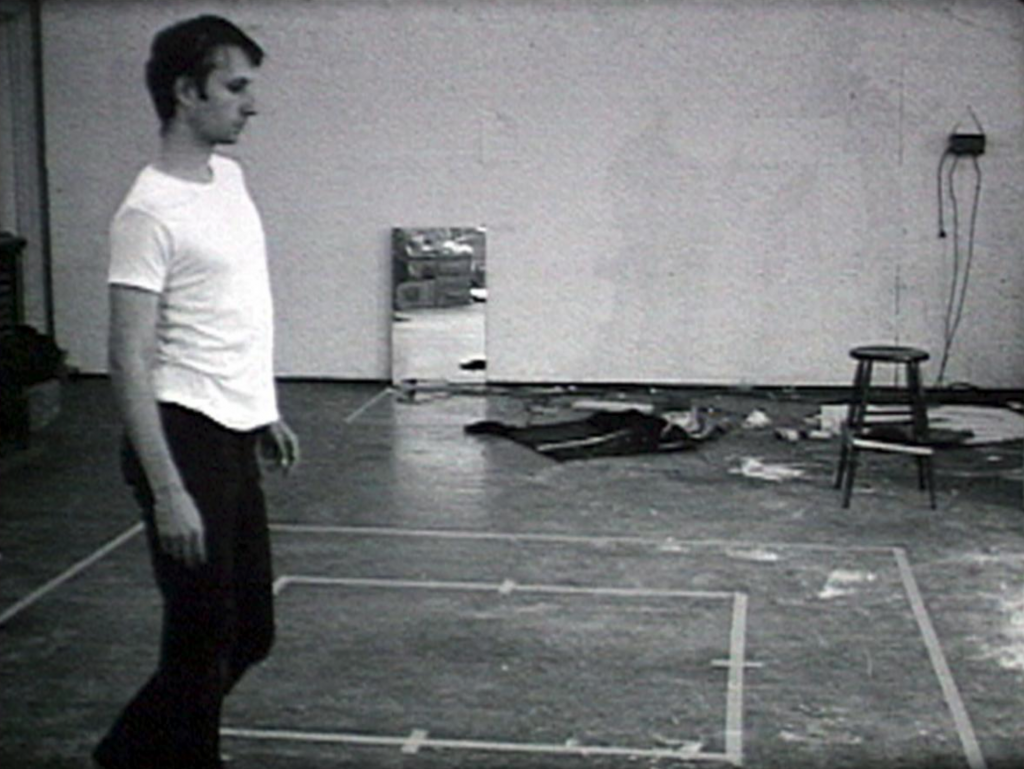A simple land-art piece, Long has made a line out of colored rocks in the Himalyan mountains.
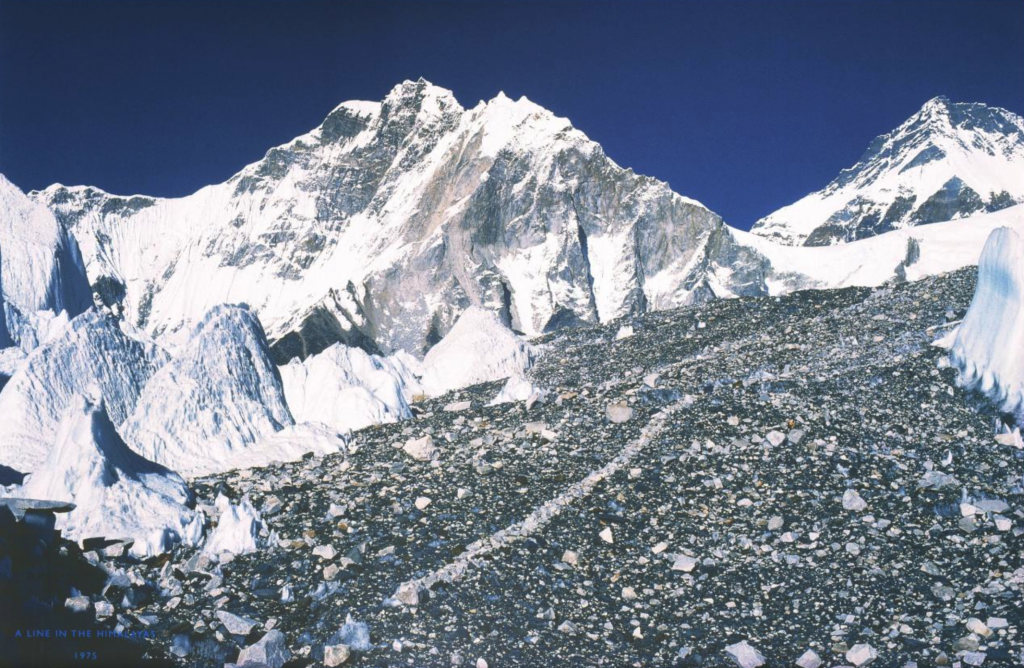
Richard Long “A Line in the Himilayas” (1975)
[credit]
“Richard Long has, since the beginning of his career, worked outside the gallery to create works by walking, where he leaves marks and traces on the landscape. His work has encompassed making epic walks lasting many days to remote parts of the world, as well as making use of the materials from the River Avon. His work is made through the relationship he develops with a place and his physical involvement with it. On the course of a walk this can entail rearranging natural elements, or walking in lines or circles so that his presence has been made manifest.
As he has remarked, “These works are of the place, they are a rearrangement of it and in time will be reabsorbed by it. I hope to make work for the land, not against it”. Accordingly, many of his walks are made visible through marks on the world which form basic shapes – lines and circles – rather than through constructions or new artifacts. Although Long has often been associated with the earliest days of ‘land art’, his interventions in landscapes are ordinarily temporary or humble and almost always simple.”
